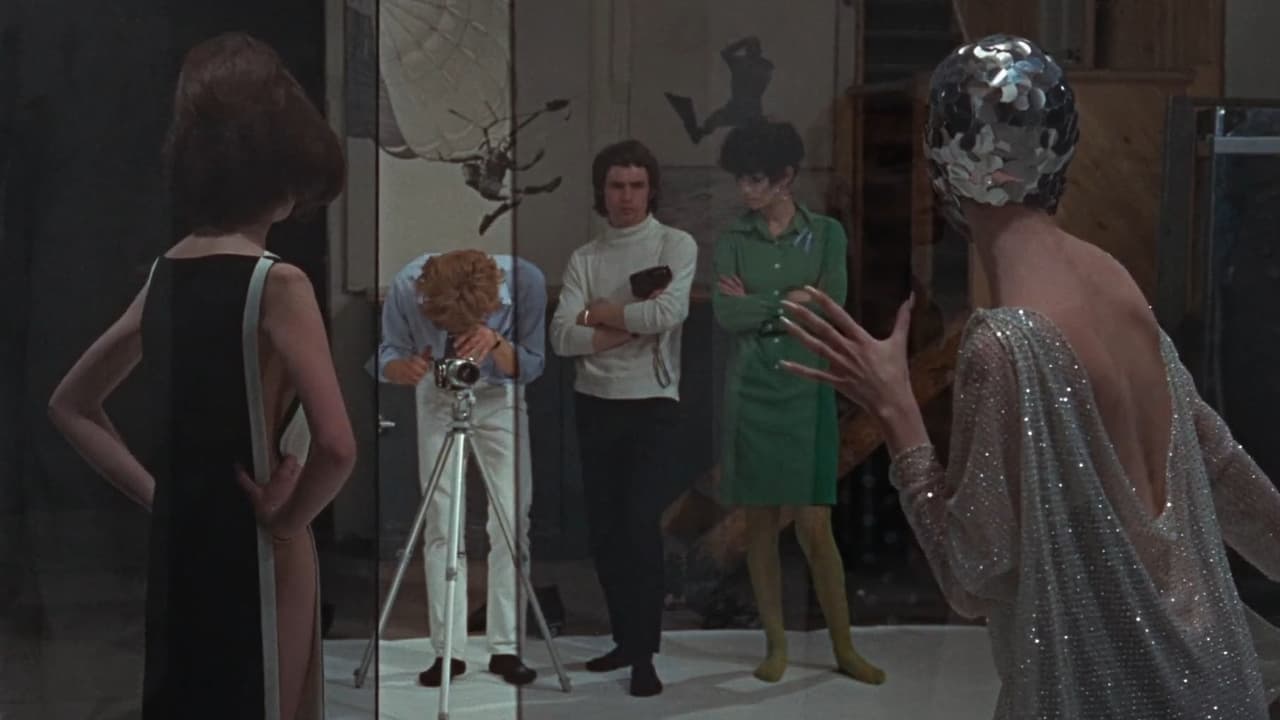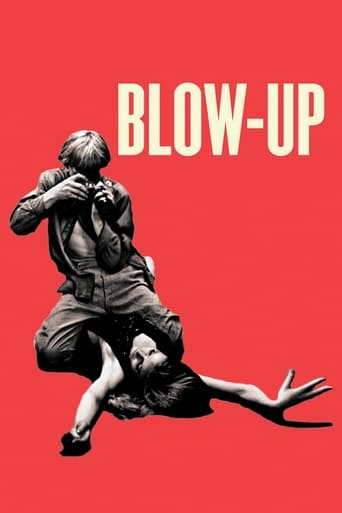

Better Late Then Never
... View MoreEntertaining from beginning to end, it maintains the spirit of the franchise while establishing it's own seal with a fun cast
... View MoreI am only giving this movie a 1 for the great cast, though I can't imagine what any of them were thinking. This movie was horrible
... View MoreI think this is a new genre that they're all sort of working their way through it and haven't got all the kinks worked out yet but it's a genre that works for me.
... View MoreClassic!A movie so good it's a shame not to watch it. Pure art. Fantastic!
... View MoreA noteworthy period work, this movie is set in London in the 1960's, a time when youth were questioning conventions and thinking critically. It was also a period when behaviour mocked established standards. In fact, the sixties hit London a few years before it reached North America, possibly because their society was overdue for a shakeup. Judging from this 1966 movie, the drug and sex culture were well underway. At one point, we see a rock group The Yardbirds smashing a guitar during a performance. This bizarre practise became commonplace at the time but might have started here. A young Londoner played by David Hemmings is caught up in the spirit of the time and uses his studio to earn a lucrative living photographing models. A photoshoot usually involved easy sexual encounters. At one point the photographer and two youthful models get into a wild orgy. A well-dressed, preppy guy, he is shallow and mean to the young models who fall all over him. This landscape is the canvas for Director Michelangelo Antonioni to create his work. One effect I particularly like is the muted soundtrack while the camera pans over the streets and alleys of London. At one point, the photographer goes on a walk into a rolling meadow-like park and everything is silent as he seeks out material for a photo book. There he spots a couple running freely and as they embrace in the middle of a meadow, he wildly shoots photos. Later, the young woman, Vanessa Redgrave, finds him and demands the photos be returned. This stimulates his interest and he carefully looks at the negatives. As she becomes more insistent, he looks at them one by one and is convinced there was foul play. The two are also attracted to one another and he finds her an ideal photo subject. She is all too ready to cooperate. Interestingly, she seems to bare her breasts in one scene but we never actually see them on the film. At the same time, his suspicion of her becomes more evident and he finds himself in a dilemma. He begins to doubt himself and on another visit to the park, he witnesses a group of mime artists demonstrating a tennis game that is so real, he becomes a participant. What is real and what is not? How do we know that what we know is real? A great Antonioni movie that soon achieved cult status, this movie is still interesting to watch and trip back in time.
... View MoreI guess some would say this is a pretentious film. If that means putting out images that are a bit bewildering and letting us decide for ourselves what is going on, one could say that. But Antonioni is a master filmmaker, one who has eclipsed most of those in the history of the art. He has carefully selected his images and has constructed excellence. David Hemmings' character is a fluff photographer who probably has all the fame and financial success he needs. He does not need to obsess on the images in the photographs he takes. He is also bored and that can be a contributing factor to one's art. When he begins to investigate a seeming murder associated with a brief acquaintance, he has purpose. However, he can't escape his malaise long enough to get down and dirty. Soon he has let too much time pass. The ending is marvelous, not pretentious at all. On a light note, I saw this movie with a young woman whose only comment afterward was in response to the sex scene with the two models. She said, "What would their mothers think?" We didn't go to any more movies after that.
... View MoreIt's always a good sign when time passes by all too quickly when watching a film, as did happen with 'Blowup'. Somewhat shamefully I must admit that this is the first Michelangelo Antonioni film that I ever saw, even if I had intended to watch 'Il deserto rosso' first, since that film had been a big inspiration for John Boorman's excellent 'Point blank', but alas.I had seen (part of) the final scene once before in a movie contest, and (/so) I had actually expected it to be in the first part of the film. Alas somewhat, again, but Antonioni (and David Hemmings and loads of pretty - ahem - birds) pretty quickly enthralled me with an almost non-stop crazy but beautiful ride through a modern London in the sixties, with all sorts of extravagant and also more understated escapades. Almost, because there were some moments eluding me with their ambiguity. And the scene in the club had really poor lighting, in my opinion (though it did enable the viewer spot pretty much every detail).These minor low-points might prove to be more in place and comprehensible when I watch this one again - which should be pretty soon, I'm convinced. I might edit this review later for that reason, and up my rating as well.For now... at least a very big 8 out of 10.
... View More